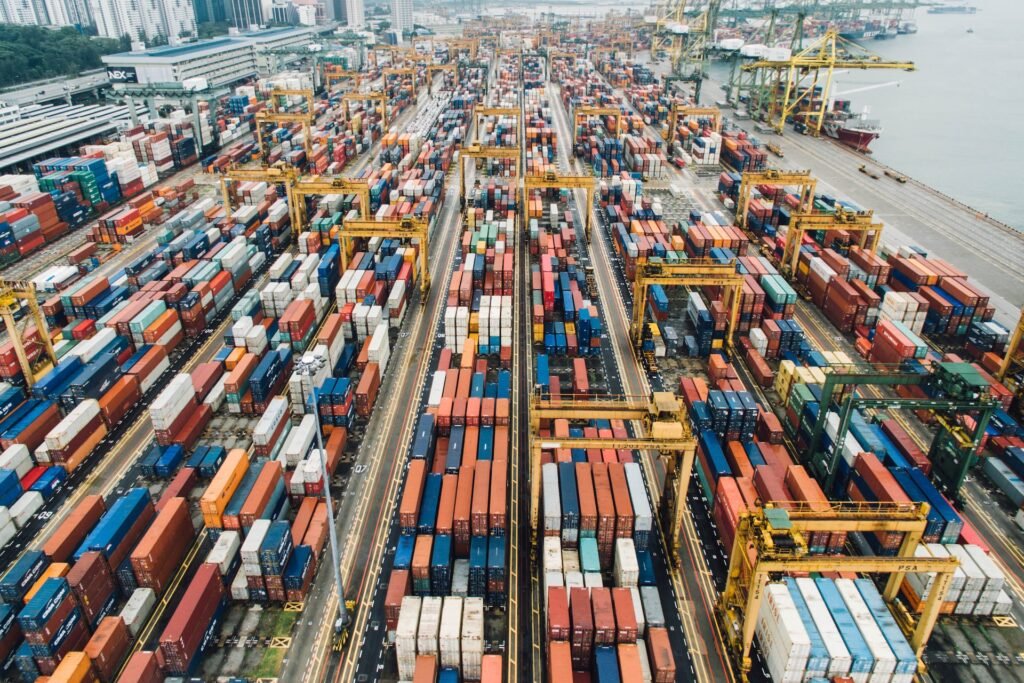
Have you ever wondered why the price of your favourite chocolate bar changes, or why some products are always in stock while others disappear from shelves as soon as they arrive? The answer lies in the fascinating interplay of demand and supply. These fundamental economic forces are the invisible hands that shape our marketplaces, influencing everything from the cost of a daily newspaper to the price of a brand-new car.
As consumers, we all play a part in demand. As businesses, we contribute to supply. Understanding how these two forces interact is crucial for anyone keen to grasp the basics of economics, marketing, or even just making smart purchasing decisions. Let’s embark on a journey to demystify demand and supply, exploring how they determine prices, influence business strategies, and adapt to our ever-changing world.
What is Demand? The Customer’s Call
At its heart, demand refers to the quantity of a specific product or service that consumers are willing and able to purchase at a given price point. Think about it: if a brand-new smartphone costs £2,000, fewer people will likely buy it compared to if it were priced at £500. This common-sense observation leads us to a crucial principle: the higher the price of an item, the lower the quantity demanded. Conversely, as the price falls, more consumers tend to open their wallets.
But demand isn’t just a wish; it’s about effective demand. This means a desire for a product that’s backed by the actual ability to buy it. You might want a luxury yacht, but unless you have the funds, your desire doesn’t translate into economic demand. Businesses constantly try to understand what consumers truly desire and, more importantly, what they are prepared to pay for. This insight guides their pricing and production decisions.
What is Supply? The Producer’s Promise
Now, let’s look at the other side of the coin: supply. This term describes the quantity of a particular product that producers or sellers are willing to make available in the market at a certain price. Here, the rule often works in reverse to demand: the higher the price, the greater the quantity that suppliers are willing to offer.
Why is this? Imagine a baker making bread. If bread fetches a very low price, they might only bake enough for their regular customers. But if the price of bread suddenly soars, they might be willing to bake more, perhaps even working extra hours or investing in a larger oven, because the higher price makes the additional effort more profitable. Suppliers are incentivised by greater returns.
The Marketplace: Where Demand Meets Supply
Markets are essentially arenas where buyers and sellers meet. They consist of businesses ready to supply a product and customers who demand it. The market price — the actual price you pay for something — is a result of the interaction between these powerful forces of demand and supply.
Neither demand nor supply alone sets the price. It’s their dynamic dance that finds the sweet spot. When you see goods on shelves and people buying them, you are witnessing this dance in action.
Visualising the Dance: Demand and Supply Schedules and Curves
Economists often use tools called schedules and curves to illustrate this relationship clearly. These show how quantities demanded and supplied change with price.
Let’s consider an example: a tabloid newspaper.
Daily Tabloid Newspaper: Demand and Supply Schedule
| Price (pence) | Quantity Demanded (000s) | Quantity Supplied (000s) |
|---|---|---|
| 35 | 800 | 350 |
| 40 | 700 | 400 |
| 45 | 600 | 450 |
| 50 | 500 | 500 |
| 55 | 400 | 550 |
| 60 | 300 | 600 |
From this table, we can observe the following:
- Demand: At a lower price of 35p, consumers demand a much higher quantity (800,000 newspapers). However, at a higher price of 60p, demand significantly drops to just 300,000 newspapers. This confirms our earlier principle: price and quantity demanded move in opposite directions.
- Supply: The newspaper supplier is willing to provide more newspapers at higher prices. For instance, at 60p, they are prepared to supply 600,000 papers. But at the lower price of 35p, they only supply 350,000. This is because higher prices make it more worthwhile to cover increased costs, such as paying printing firms extra for staff working unsociable night hours to pack and distribute papers.
This information can be represented even more clearly through demand and supply curves. Imagine plotting these points on a graph:
- The demand curve slopes downwards from left to right. This visualises that as price decreases, quantity demanded increases.
- The supply curve slopes upwards from left to right. This shows that as price increases, quantity supplied also increases.
The point where these two curves intersect is incredibly important.
Market Equilibrium: The Sweet Spot
The market ultimately decides how many papers (or any product) will actually be bought and sold. This occurs through the interaction of demand and supply, which creates market equilibrium.
Equilibrium is the “just right” position. It arises where the desires of both buyers and sellers match. At this point, there is no surplus of goods, nor is there a shortage. In our newspaper example, equilibrium occurs at 50 pence, where 500,000 papers are both demanded and supplied.
Any price different from 50p would be a disequilibrium. This situation cannot last long.
- If prices are too high (e.g., 60p), suppliers produce too many papers (600,000 supplied, but only 300,000 demanded). This creates a surplus. Businesses incur extra printing costs but gain no additional revenue, leading to waste. To clear the surplus, prices would likely fall.
- If prices are too low (e.g., 35p), businesses won’t produce enough to meet customer demands (350,000 supplied, but 800,000 demanded). This creates a shortage. Customers will be frustrated. They might even “bid up” prices, pushing them back towards equilibrium.
Understanding market equilibrium is a cornerstone of effective business strategy. Businesses must continually assess demand for their products. Companies like Coca-Cola analyse trends in carbonated drinks. Banks investigate demand for financial services. Armed with this data, firms make informed pricing decisions. They consider competitor actions and consumer demand.
Beyond the Basics: Shifts in Demand and Supply
Markets are not static. The demand for and supply of goods and services will naturally change over time. Successful businesses anticipate these shifts.
Market research is a vital tool here. It helps companies understand demand changes. By anticipating these changes, market-focused companies can fine-tune their pricing.
Factors Increasing Demand
Several important factors can lead to an increase in demand for goods or services:
- Economic Factors: A booming UK economy, for instance, means people have more disposable income. With more money, demand for many products rises, benefiting most businesses.
- Social Factors: Changing social trends significantly affect buying patterns. Consider modern life: people are often “cash-rich and time-poor.” They lead busy lives with less time for home cooking. This drives an increasing demand for convenient “ready meal” solutions. This trend creates opportunities for companies like McDonald’s and Kraft Foods.
- Changing Tastes and Preferences: What’s popular today might not be tomorrow. Trends in fashion, music, or technology can cause rapid shifts in demand.
- Population Changes: An increase in population, especially within a target demographic, naturally leads to higher overall demand.
- Availability of Substitutes and Complements: If the price of a substitute good (e.g., coffee instead of tea) increases, demand for the original good might rise. Conversely, if the price of a complementary good (e.g., cinema tickets for popcorn) falls, demand for the complement might also increase.
- Advertising and Promotion: Effective marketing campaigns can increase consumer awareness and desire for a product, thereby increasing demand.
Factors Influencing Supply
In our modern, high-tech world, significant factors also influence supply. New production technologies are a prime example, leading to high-volume, low-cost goods. For example, Coca-Cola has developed high-tech canning factories. These factories use less costly materials for can production.
Other factors influencing supply include:
- Changes in Production Costs: If raw material costs fall, or if new, more efficient production methods emerge, suppliers might be willing to supply more at each price level. Conversely, rising costs would decrease supply.
- Technology Advancements: As seen with Coca-Cola, new technologies can lower production costs and increase efficiency, allowing suppliers to produce more goods.
- Government Policies: Taxes, subsidies, and regulations can all impact the cost of production and, therefore, the quantity suppliers are willing to offer. For instance, a subsidy on renewable energy might increase its supply.
- Natural Disasters/Weather: These events can significantly impact the supply of agricultural products or disrupt supply chains for manufactured goods.
- Number of Suppliers: An increase in the number of firms supplying a product will generally lead to an increase in overall market supply.
- Expectations of Future Prices: If suppliers expect prices to rise in the future, they might hold back some current supply to sell it later at a higher profit.
Key Concepts in Demand and Supply
To fully appreciate demand and supply, a few more concepts are helpful:
- Wants: A want is simply a desire for a product; it is not the same thing as demand. Remember, demand requires purchasing power.
- Elasticity of Demand: This refers to how sensitive demand is to a change in price. If demand changes significantly with a small price change, it’s considered elastic. For example, luxury goods often have elastic demand; a slight price increase might cause many people to delay or forgo a purchase. If demand changes very little, it’s inelastic. Essential goods like basic food items or petrol often have inelastic demand because people need them regardless of minor price fluctuations.
- Price Elasticity of Supply: Similar to demand elasticity, this measures how sensitive the quantity supplied is to a change in price. If suppliers can quickly increase production in response to a price rise, supply is elastic. If production takes a long time or is difficult to scale up, supply is inelastic.
The Power of Knowledge: Why This Matters to You
Understanding demand and supply isn’t just for economists. It’s vital for:
- Entrepreneurs: To set optimal prices, forecast sales, and understand market opportunities.
- Marketers: To identify target audiences, position products, and craft compelling campaigns based on consumer willingness to buy.
- Investors: To predict company performance and market trends.
- Consumers: To make informed purchasing decisions, understand price fluctuations, and identify good value.
- Policymakers: To design effective economic policies that influence markets for the benefit of society.
In essence, demand and supply are the bedrock of market economics. They constantly work behind the scenes, determining how goods and services are valued and distributed. By grasping these fundamental principles, you gain a powerful lens through which to view and understand the dynamic world of business and trade. Keep observing, keep learning, and you’ll become a master of the marketplace.
 Businesses and taxation (PDF)
Businesses and taxation (PDF) 